August 19, 2022
It rained much of the night but we were snug in our cabin. At 7:30 am sharp, I called a nearby shop and told them our story about the truck’s problem. They said they were booked up three weeks in advance but they’d see if they could squeeze me in if I dropped off the truck. I drove the mile to the shop (the truck worked fine, of course) and spoke to Tracey, the manager, a tall 40-something with a ready smile and can-do attitude. He had lived in Brookings, Oregon – one of our favorite towns – and as we chatted, suggested that it might be time soon for him to head back to a warmer, less snowy climate. He said he’d do his best with the truck and I walked the mile back to the cabin in the rain, fingers crossed.
Three hours later the shop called and said that their scan tool showed the left rear wheel sensor was bad – but it would be nearly a week to get the part. Back at the shop after another mile of walking in the rain, we disconnected the sensor so I could drive the truck without interference from the traction control. While I was paying, Tracey asked where I was from. I told him Northern California near Chico and he stunned me when he said his parents lived in Paradise, our small home town, with a population of 6,000. In fact, he said, he grew up a few miles from our house. Small world.
Later, I looked online and found a place in Anchorage that had a sensor, hoping that when we passed back through, I could replace it in a parking lot somewhere. For now, the truck worked, but had no stability control or ABS. At least we had our home and vehicle back.
The endless rain, now coupled with wind, precluded our hoped-for glacier cruise. We had one more night at the cabin, and now that we had transportation again, we decided to explore.
Homer is known for halibut and it’s Susan’s favorite fish so we decided to head to a nearby fish market to get halibut to cook back at the cabin. A few hearty fishing charters had gone out in the morning but most were shut down just like the glacier cruises because of the rain and wind. By now it was mid-afternoon and perhaps because of the limited boats that had gone out the two fish markets in town were sold out. The last fish markets we tried were touristy ones on the Spit. Surely there’d be halibut there because it’s where the fishermen arrived with their catch. But even there all they offered was a small selection of frozen fish (not even halibut) for tourists to ship home at exorbitant prices. Nope.
Instead, we went to well-known Captain Pattie’s seafood restaurant on The Spit. Even though it was mid-afternoon, the place was packed. A good sign. We snagged a table overlooking the bay and glacier-draped mountains. Through the window, we watched a few hearty fishermen unloading their catch and wondered why it was so hard to find any fish in the markets. Resigned to eat what the restaurant prepared instead, we each ordered fresh halibut dishes. The bill, coming in at $90 for just two entrees and no beverages or extra sides, was definitely the most we’d ever paid for a lunch. Everything in Alaska (except gas) was significantly more expensive than at home. But we were in a wild, rugged and spectacularly beautiful place – everything we’d hoped. And the halibut was excellent.
After lunch, we wandered about the Spit in the rain. The Spit extends a couple of miles into the bay, only a few feet above sea level. There were hundreds of fishing boats along the docks, with some apparently abandoned boats near the beginning.
There was also a not-very-inviting and way overpriced gravel campground about halfway down, and a small area lined with small shops and restaurants. Because of the very short halfway-decent weather season, it’s not a very touristy place and not really known for catering to visitors. A few out-of-towners were wandering the streets after finishing a chartered fishing trip, some in thousand-dollar rain gear.
Back at the cabin, we hung our wet jackets and hats to dry and spent time figuring out how to pivot our plans/intentions given the near-ceaseless rain. The Kenai Peninsula is known for its cold, wet climate, but mid-July to mid-August is the driest period with average rainfall occurring only one-out-of-three days. Obviously, we weren’t hitting the odds well.
Suddenly, late in the evening just before we got ready for bed the sun emerged. We gleefully stepped outside to soak in some warmth but the sun’s emergence was short-lived. Back inside the cabin, we were warm and dry with the heat cranked up. It finally got dark sometime after 11:00 and we drifted off to sleep to the sound of more rain.

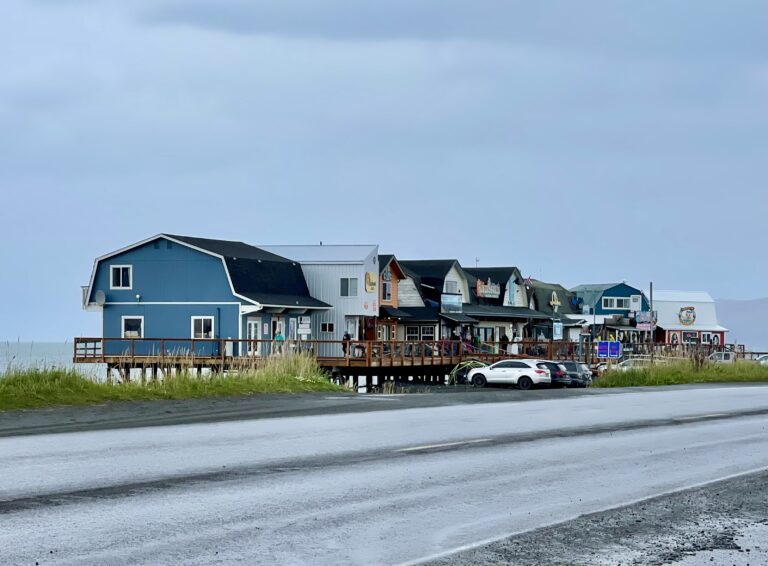
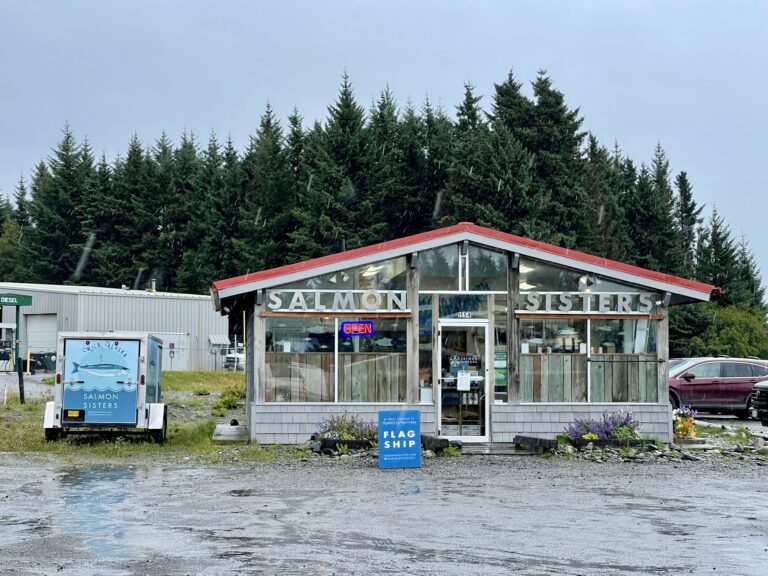
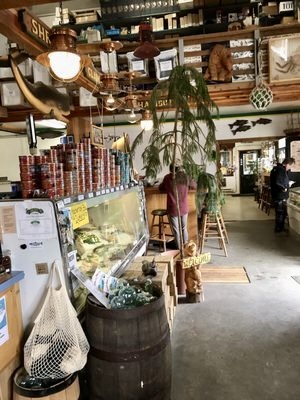
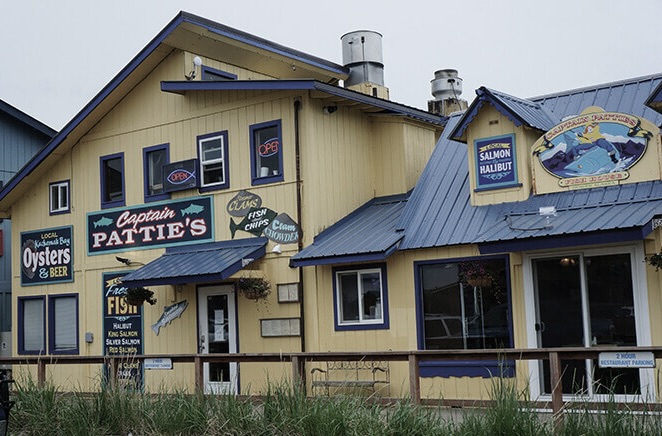
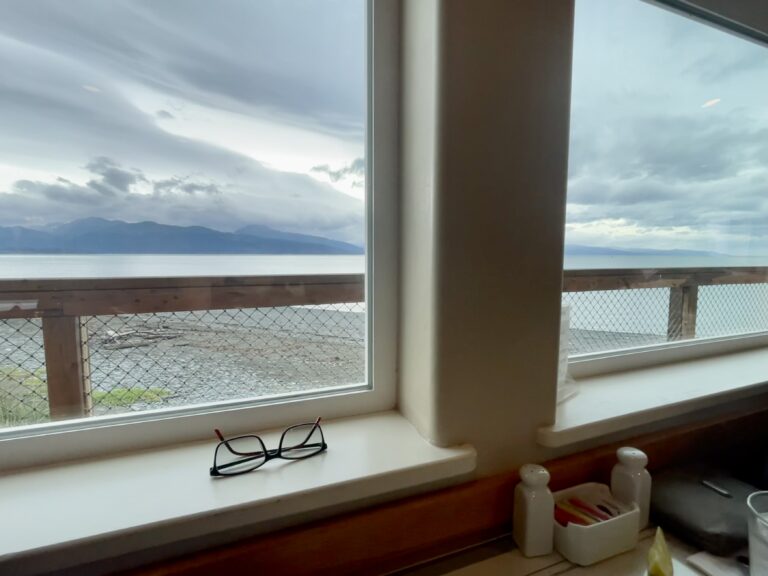
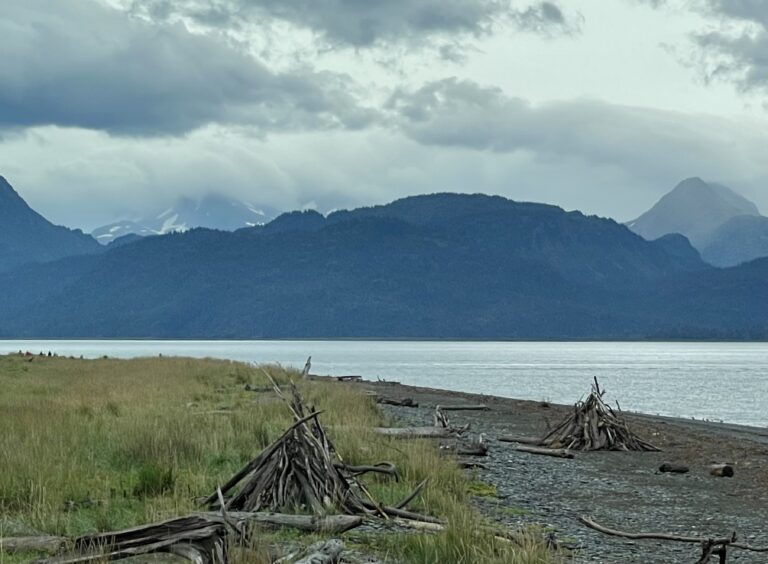
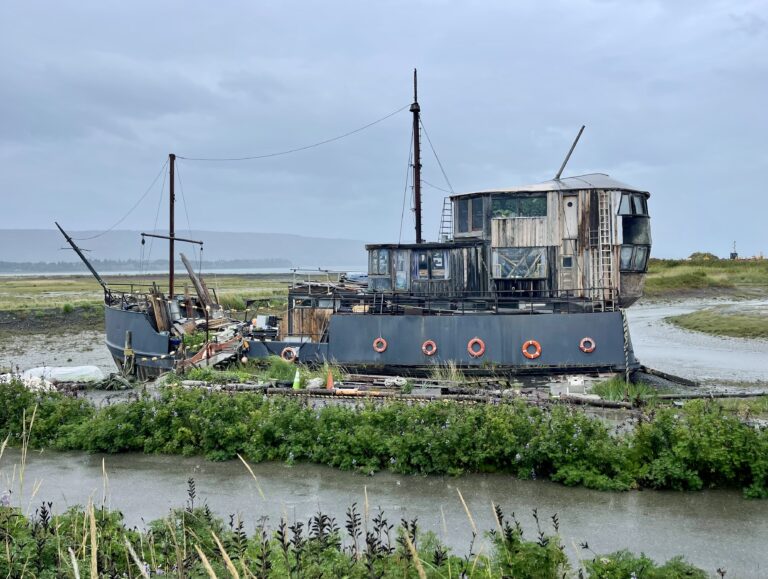
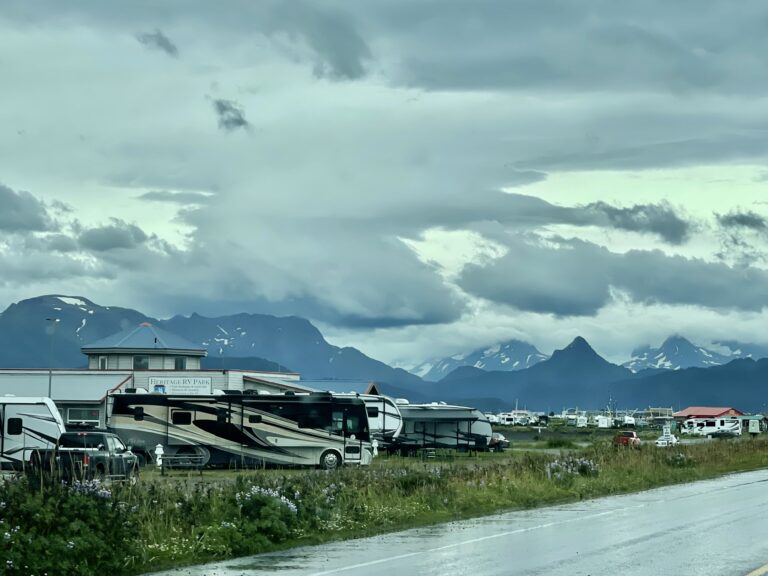
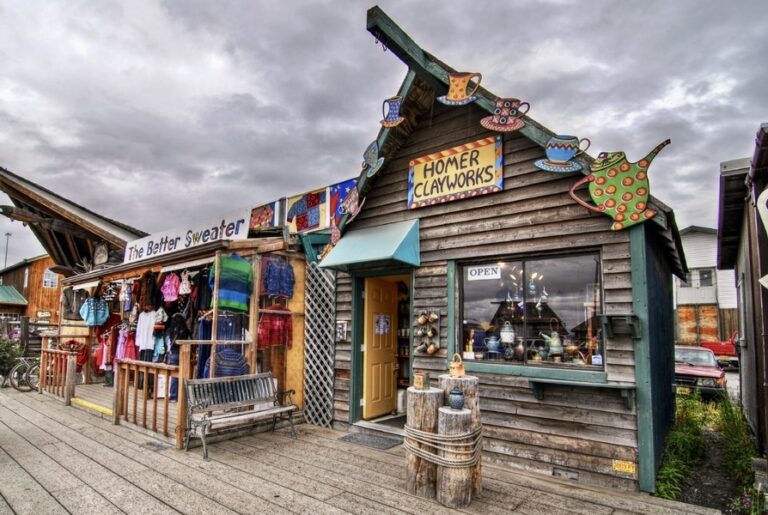
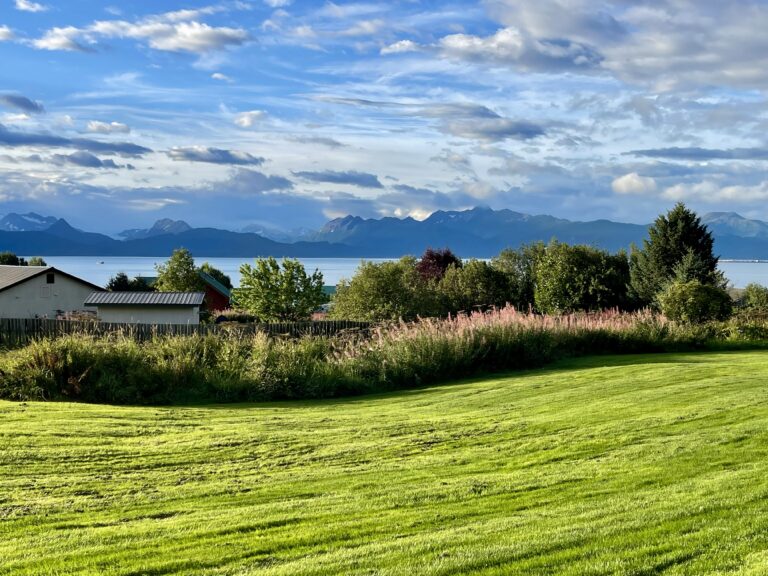
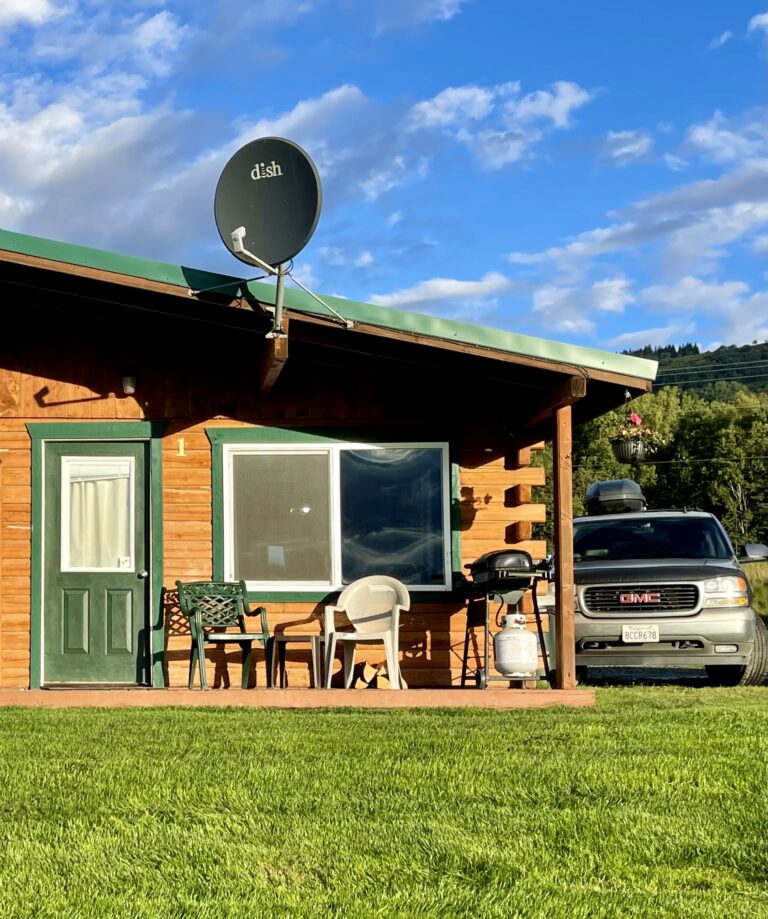
6 Responses
I am working really hard to avoid making a halibut pun.
Hey, I did it! Halibut that!
I had to do the same…
Doh!
A halipun butt?
Beautiful bad-weather photos! It was so great to meet you two!!!
Safe & Happy Travels!
Carmen@LIB